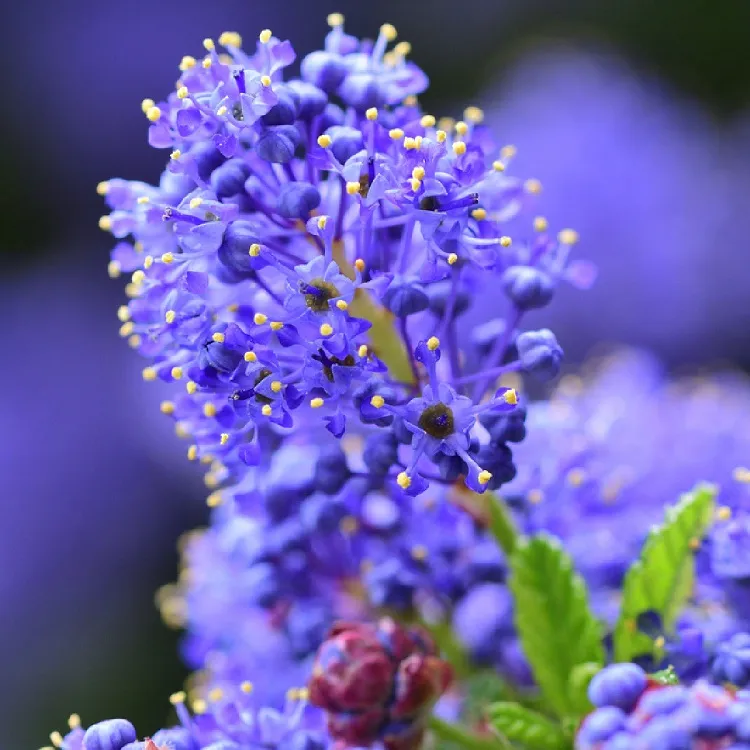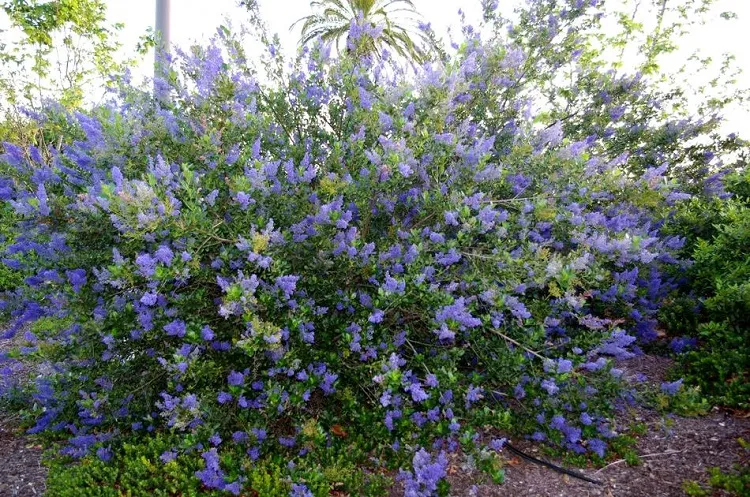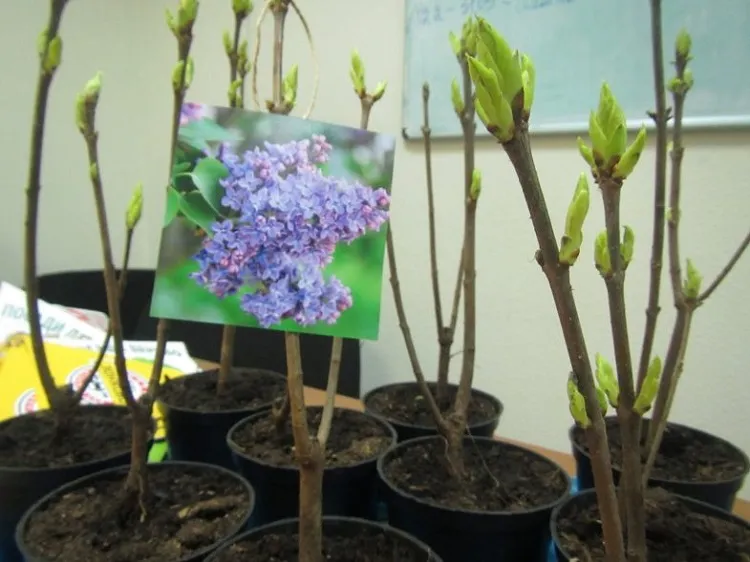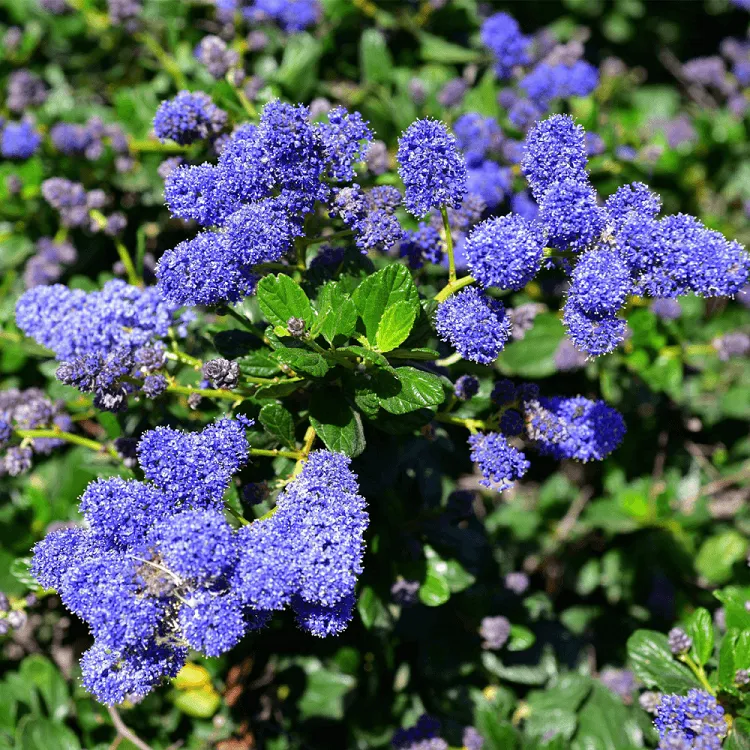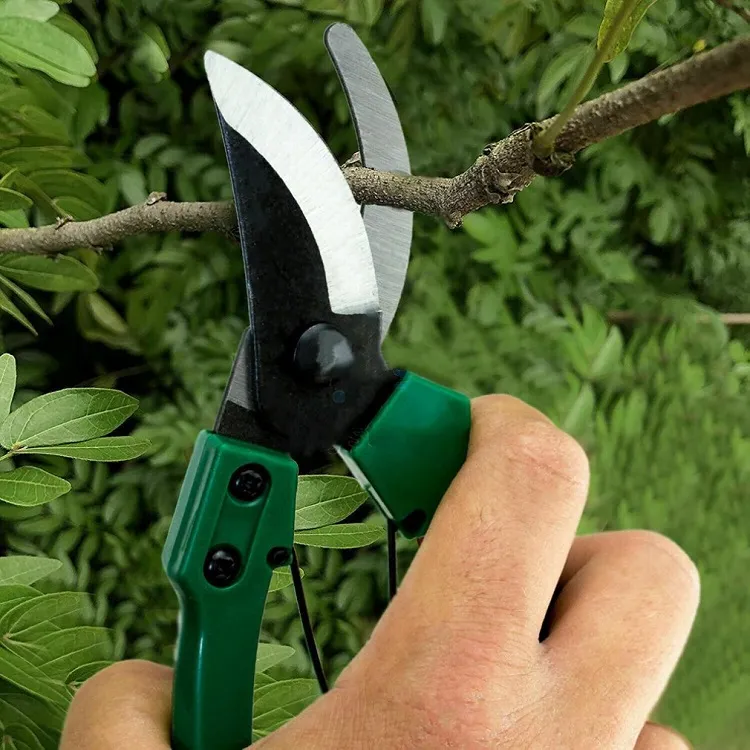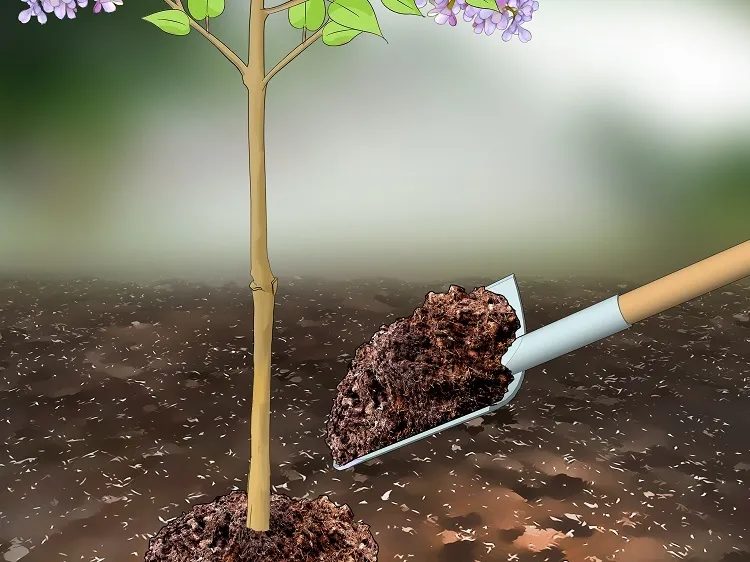Why is this landscaping shrub so loved by gardeners? The California lilac is famous for its flowers in tender blue palette and evergreen foliage, bringing an abundance of blooms and charm to gardens and landscapes. What are the main aspects of its growing and caring you should know if you decide to have this amazing plant in your garden?
Why is California Lilac Appreciated in a Landscape Design?
This flowering shrub, despite its name, is not a true lilac, but belongs to the Ceanothus genus, a diverse group of shrubs species. There are many types of its cultivars, which offer a range of sizes and a palette of colors. Known for its vibrant blue, purple, or white blooms, this unique shrub attracts bees and butterflies, bringing a flair of wildlife beauty to your garden. Not only its flowers, but also the evergreen leaves provide year-round interest, and the plant is much appreciated for a landscape design.
Suitable Time to Plant California Lilac
The ideal time to plant California lilac is in the early spring or fall, when the temperatures are mild. Planting during these periods allows the shrub to establish its root system before facing the stresses of summer heat or winter cold. It’s important to note that it generally develops more successfully when it is moved from a pot as a container-grown specimen. Select a healthy nursery-grown plant and ensure it has a well-developed root system before transplanting it in your garden.
The Best Soil for the California Lilac
California lilac thrives good in well-draining environment with a slightly acidic to neutral pH level. The flowering shrub prefers loamy, enriched with organic matter soils. Before planting it, it’s advisable to amend heavy clay soils with compost or other organic materials for a very good drainage, as this crucial for the health of the plant. Overly wet soil can lead easily to root rot and other diseases. So, avoid planting in areas with poor drainage or standing waters.
California Lilac Cuttings
California lilac can be propagated through two types of cuttings. Softwood cuttings are taken in early summer, when the new growth is still intensive, while hardwood ones are cut in late fall or winter when the plant is dormant. You should prepare them for planting by removing the lower leaves and dipping their ends in rooting hormone. After that, place the cuttings in a well-draining potting mix, and keep their growing environment enough warm and humid, until the roots appear. Once rooted, the young plants can be transplanted to the permanent location.
Read also: Find Out How to Propagate Bougainvillea Whether You Grow It from Cutting or Seed
How to Water California Lilac?
To receive enough moisture is crucial for the health and vitality of the young plants. Therefore, water newly planted shrubs deeply and regularly to help develop well their root systems. Once established, California lilac is generally drought-tolerant and require minimal damp in its soil. The only exception is during prolonged dry periods, when it’s important to provide the flowering shrub with supplemental irrigation. In such a case, water deeply and infrequently, allowing the soil to dry out slightly between two sessions.
When and How to Prune a California Lilac?
Pruning is a mandatory part of California lilac care. The best time to do this is immediately after the flowering season, usually in late spring or early summer. It’s important to prune lightly and selectively to avoid removing potential flower buds for the next blooming season. Remove any dead or damaged branches, as well as trim back excessive growth till you maintain the desired shape.
What is the Appropriate California Lilac Fertilizer?
This pretty shrub generally does not require fertilization if grown in well-amended soil. Nevertheless, if you notice signs of nutrient deficiency like pale leaves or stunted growth, a light application of a balanced, slow-releasing fertilizer will be beneficial. Choose a specifically formulated for woody plants fertilizer, and follow the package instructions for proper application rates.
How to Make California Lilac Bloom?
To encourage abundant blooming in this amazing flower, the following environmental conditions should be considered:
Full sun: This flowering shrub thrives under direct sunlight, and if it can’t receive it, this will most probably result in reduced flower production.
Light pruning: A little pruning and deadheading after flowering helps stimulate a bushier growth and encourages the blooming of the shrub.
Scarce fertilization: Over-fertilizing the plant with high-nitrogen fertilizers can lead to excessive foliage growth at the expense of flowers.
Avoid close planting: Do not disturb its roots after its transplantation in the garden, and avoid planting other plants too close to the shrub, as competition for resources can hinder its blooming.
Pest and disease management: For increasing the plant’s blooming potential, treat any pest infestations promptly and take preventive measures. In order to decrease the risk of diseases, you should be careful to provide adequate airflow and avoid overhead watering.
Read also: Here’s Your Guide to Fertilizing and Taking Care of Lilacs + How to Get Lilacs to Bloom

